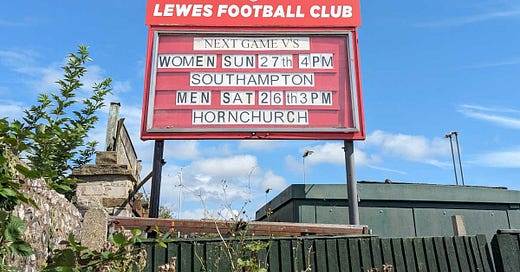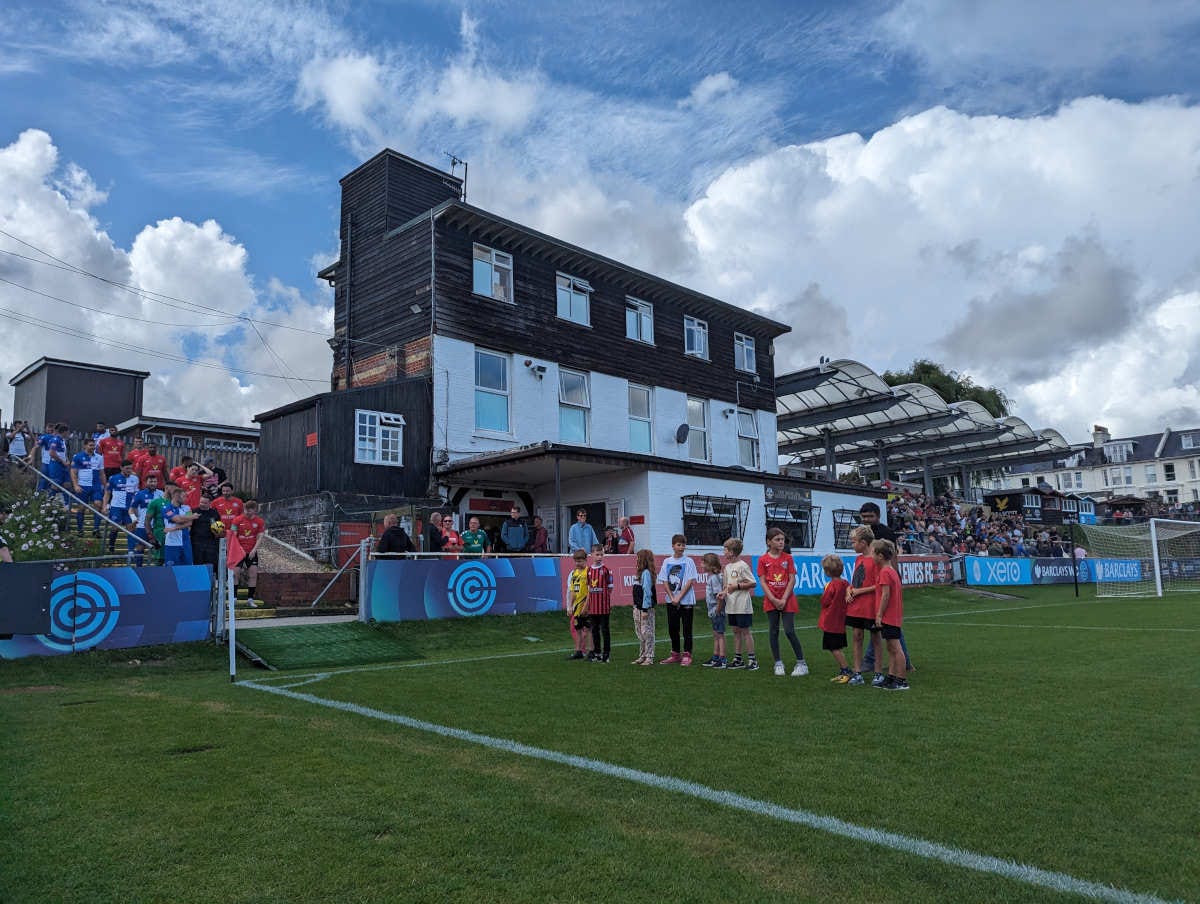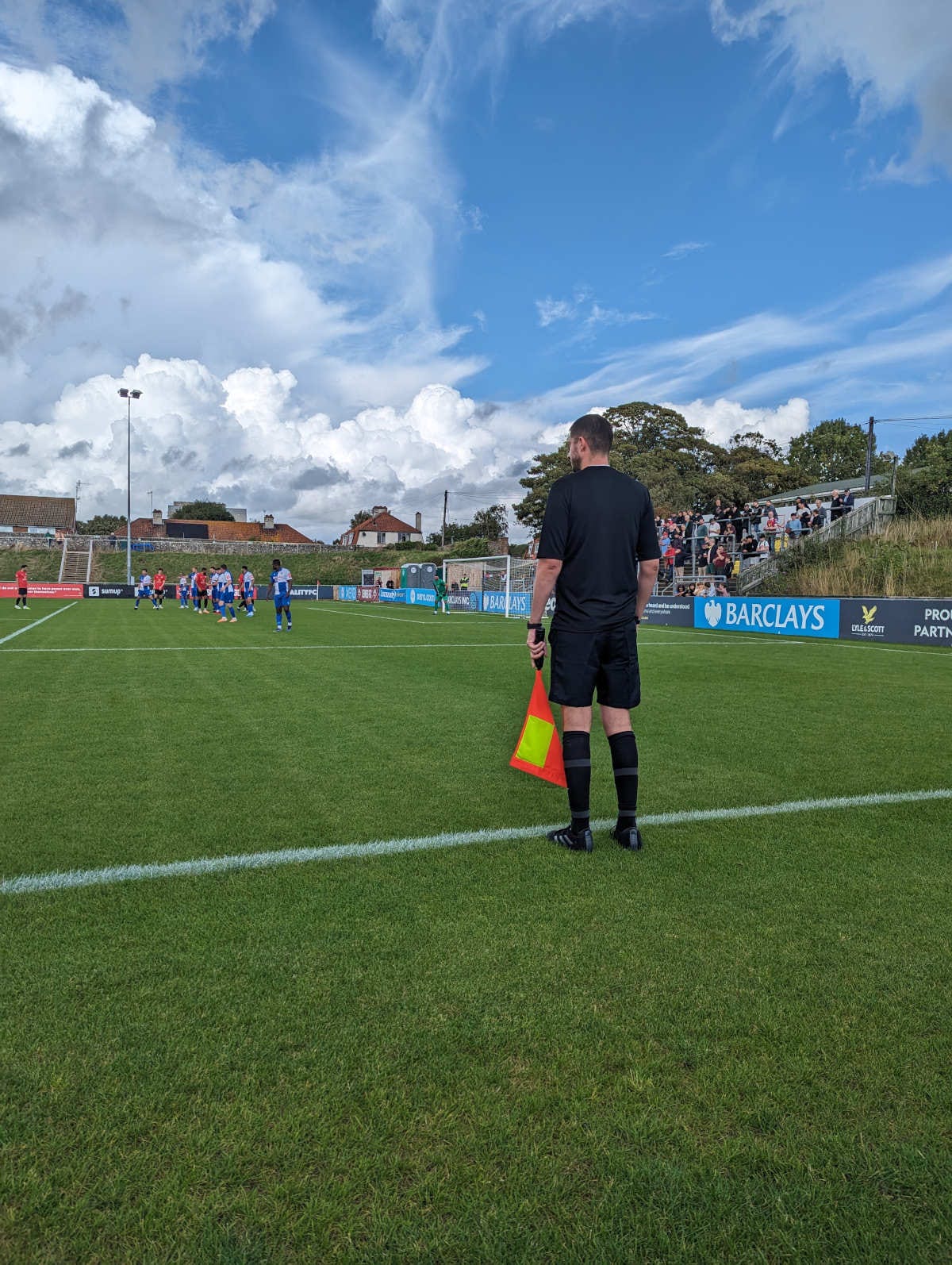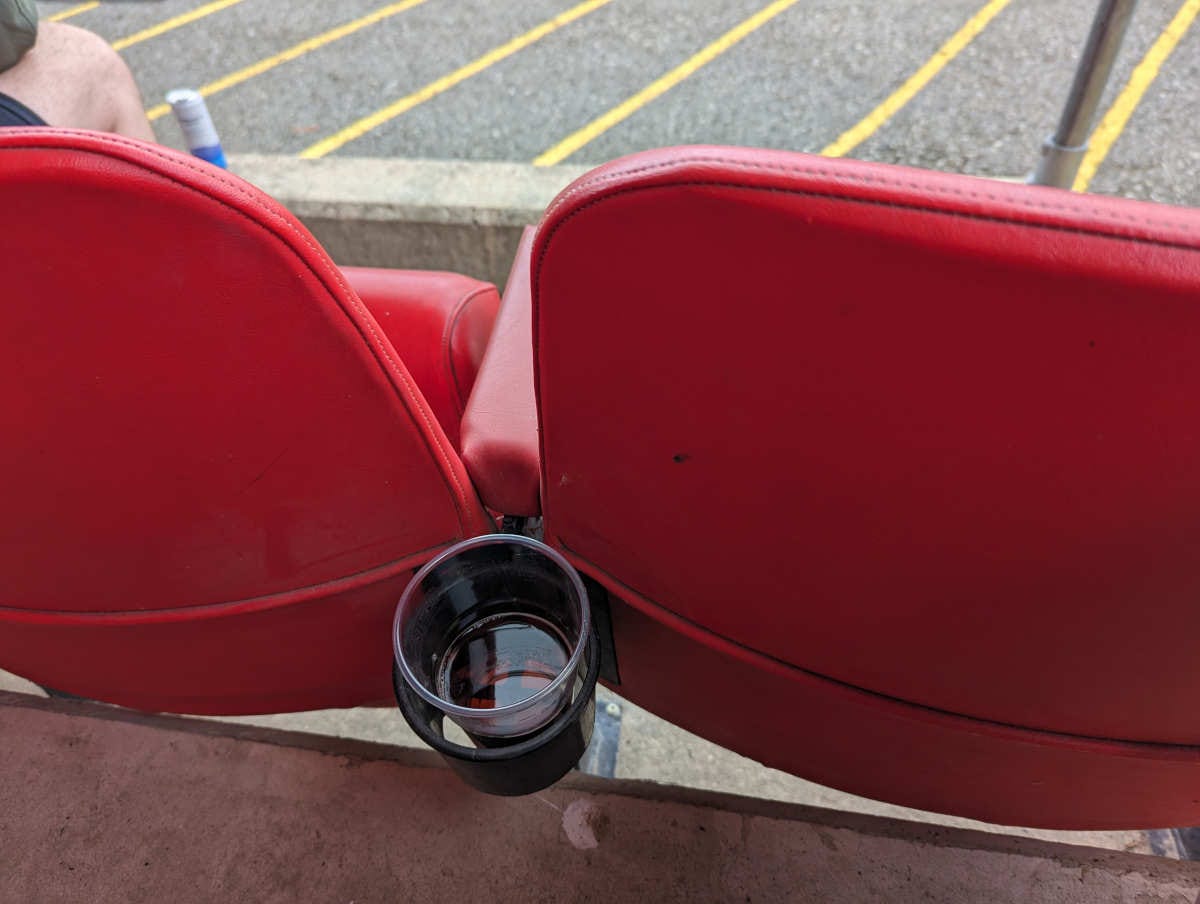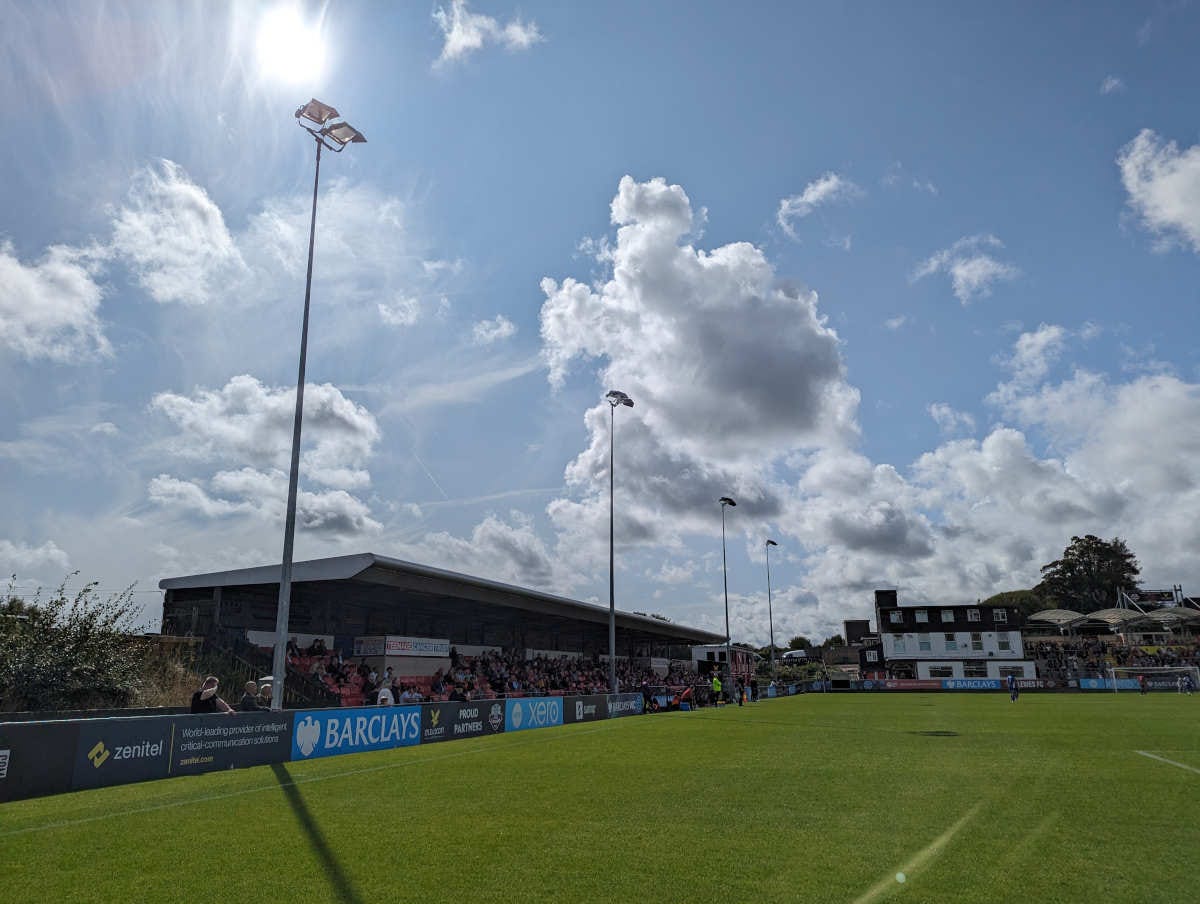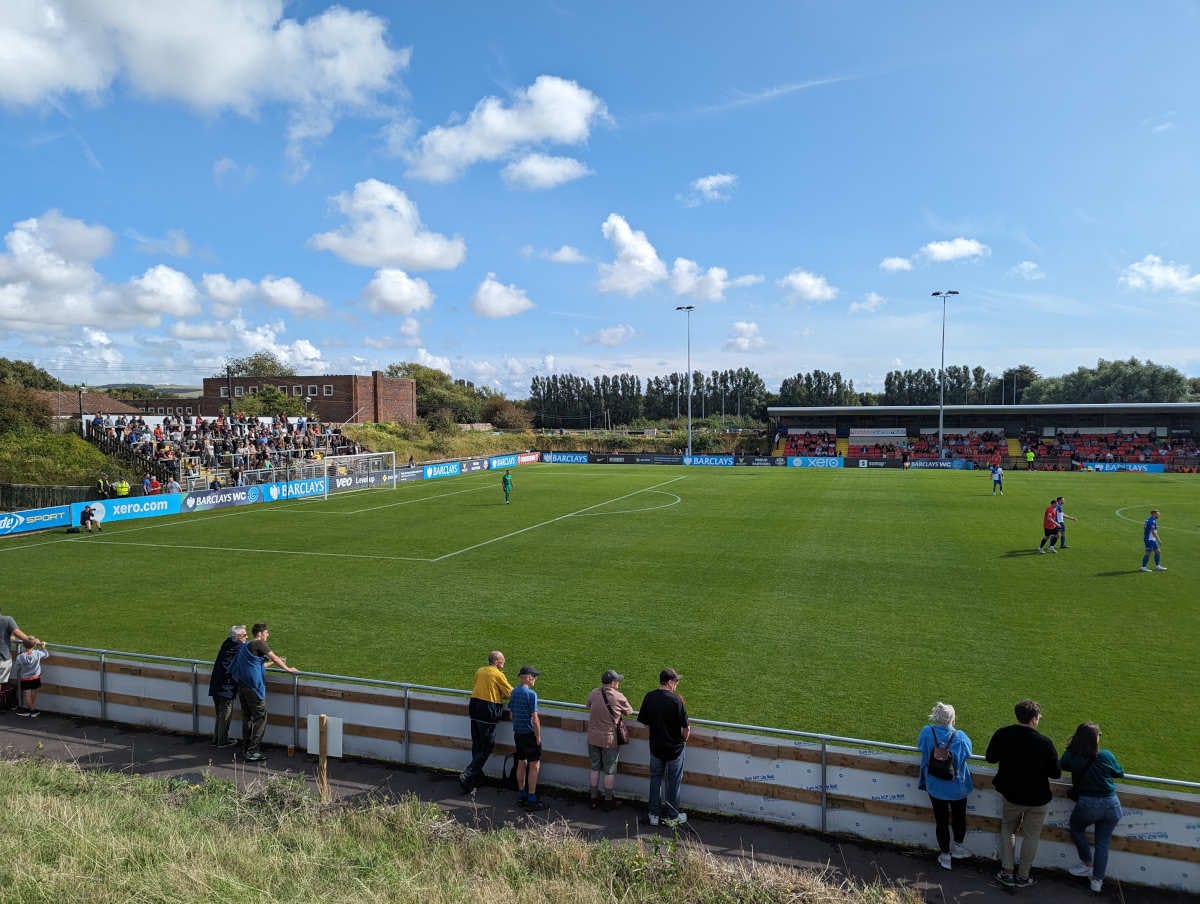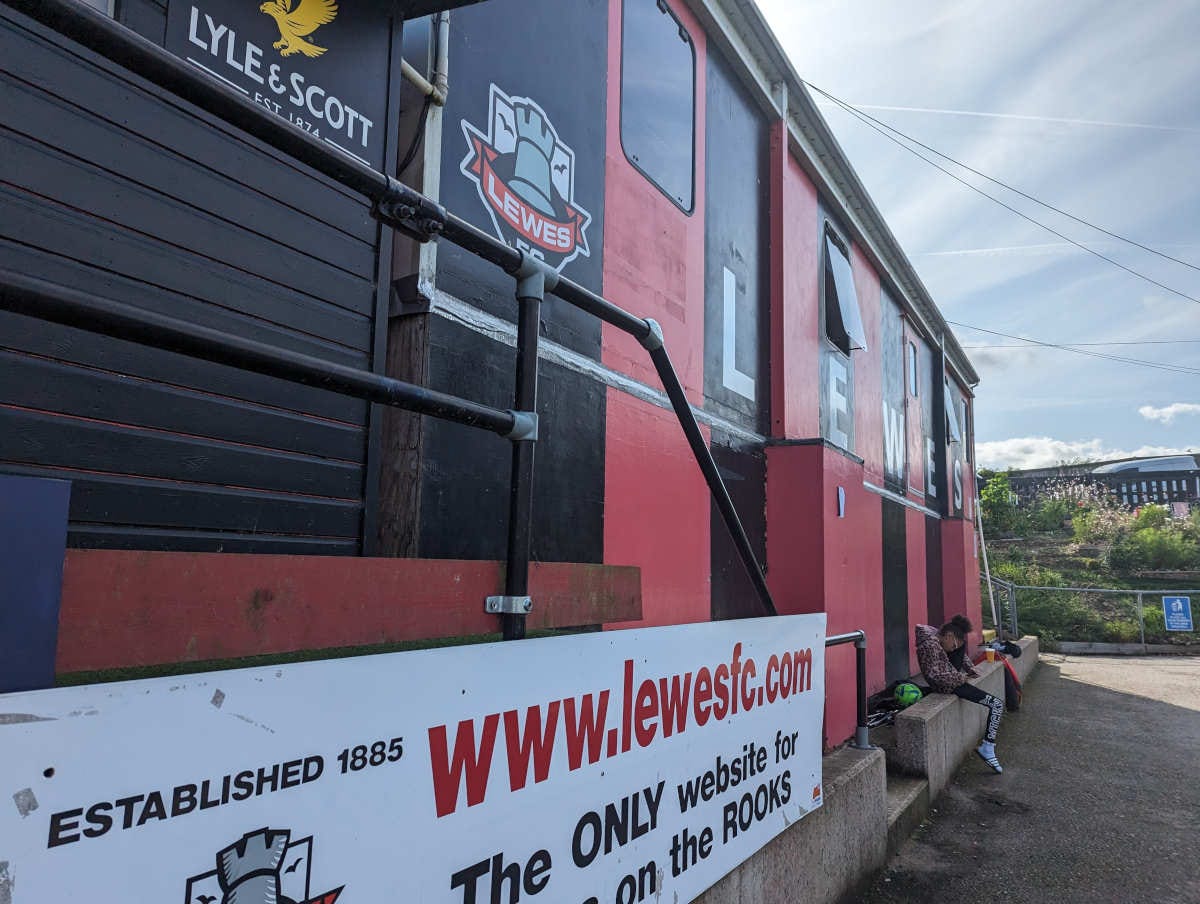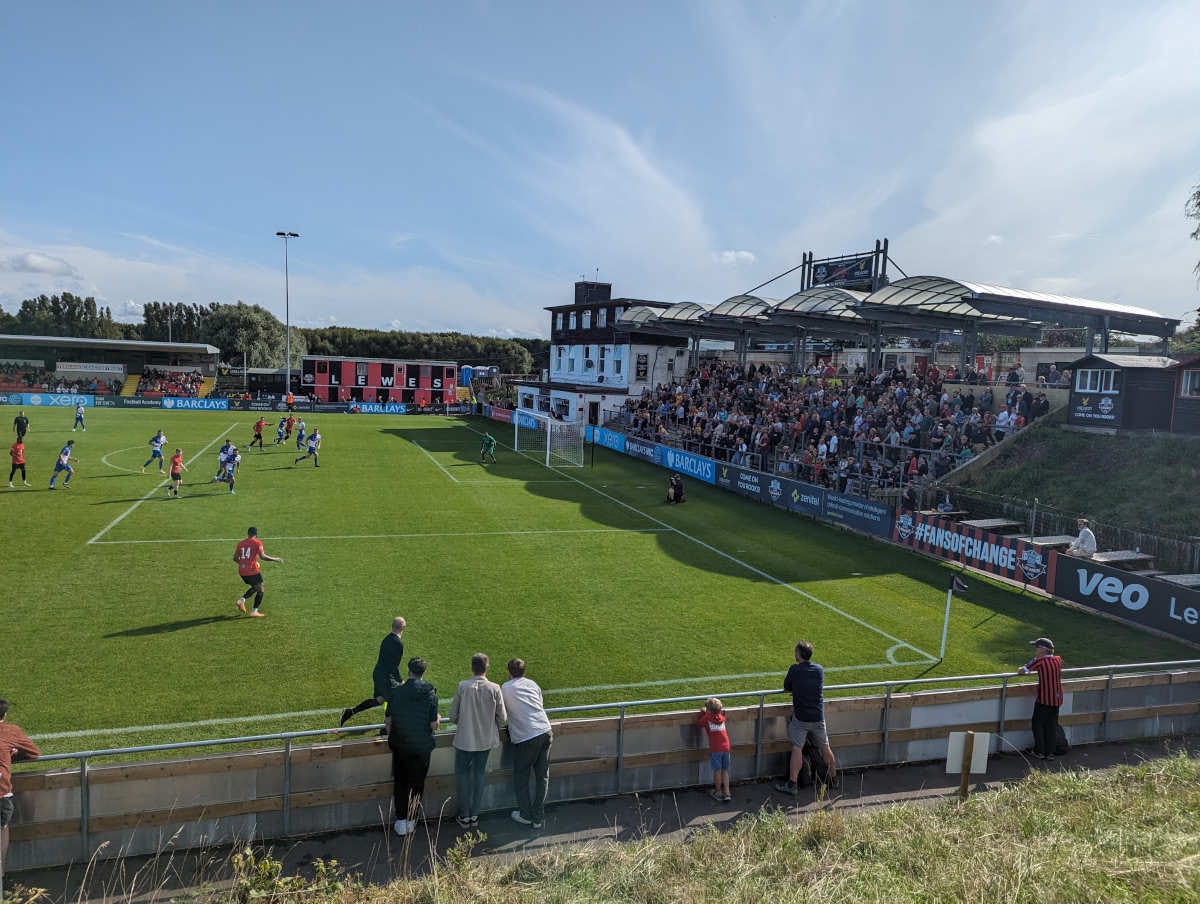The Lewes Dilemma
There's trouble brewing in Lewes, with talk of a majority share in the women's team being sold up to private investment. Is this the end of 'Equality FC'?
The forecast on the BBC Weather app predicted a thunderstorm over Lewes for three o’clock on Saturday afternoon, but as anybody who lives near the Sussex coast will already be aware, weather conditions can change at a moment’s notice. It’s a Bank Holiday weekend, and in the non-league game that means that there are matches on both the Saturday and the Monday. Everybody gets a home game. But there’s a sense of unease in the air over this particular corner of East Sussex at the moment over the possibility that their much-celebrated women’s team could have a controlling share sold to a private investment company.
The news had first been reported in The Athletic and the Guardian a few days earlier. According to the website of Mercury/13, a group fronted by Eni Aluko (who have, as an aside, the ugliest website homepage design I’ve seen in a number of years), “The group is looking for its first investment to be within Lewes FC, a club that earlier this year saw the Football Business Awards award it first place for fan engagement, beating several Premier League clubs to the title.” You don’t have to proceed very far before a near-audible salivating sound starts to emanate from the release. The very next sentence, as it goes:
In the last five years, Lewes FC’s sponsorship has increased twentyfold, and global brands such as Xero, Lyle & Scott and SumUp have joined as sponsors.
The game used to be about glory.
But how would this ‘acquisition’ (of 51% of Lewes WFC, giving them a controlling shareholding) even work? Mercury13 presumably want to grow the business in order to get a return on their investment. You can agree with the principles of it or not, but it’s undeniable that this is how it’s supposed to work. Lewes is a town of around 18,000 people, and even including nearby villages it seems difficult to imagine the sort of crowds that might be expected in a Women’s Super League with private investment money pouring into it being readily available at Lewes. The nearest big town, Brighton, already has a women’s team, albeit one which has for several years played their home matches twenty-odd miles inland at Crawley, though it should also be added that they could return to Falmer—less than six miles from Lewes—at any point.
And even if they were to be able regularly to attract substantially bigger crowds, the location of the club’s ground, The Dripping Pan, is such that a situation could absolutely choke the town centre on match days. And even if all of that could be overlooked, then The Dripping Pan itself would need redevelopment work itself. One of the most distinctive and best-loved non-league football grounds, a place absolutely, for the want of a better word, dripping with character unseen anywhere else in the English game, could be irrevocably altered to accommodate this ‘ambition’. It currently holds 3,000 people. Is that the summit of ambition for these investors, and could that even be achieved in a town of this size? And if it couldn’t… then what?
Because what would be to stop majority owners from deciding that their ambitions couldn’t be met by a town the size of Lewes in few years time? What controls would be in place to prevent them from uprooting the club and franchising it to a bigger town or city? It can hardly be argued that this hasn’t happened in women’s football before. It is also worth remembering that a quick glance at league tables can be deceiving. Yes indeed, Lewes did finish fourth from bottom in the Women’s Championship at the end of the 2022/23 season, but women’s professional leagues are smaller than men’s professional leagues. They were the 21st best women’s team in England last season. Were the Women’s Super League to expand from its current twelve clubs, that’d be a handy position to be in. In other words, that league place is valuable. Presumably, that’s why this fund is sniffing around in the first place.
And there is also a fairly fundamental principle at play here, as well. What was enervating about Lewes’s original decision over pay, which was in part a PR decision (and there’s nothing wrong with that), was that it was an attempt at building genuine linked equality between the earnings of men and women players in a sport which has never made any moves in that direction of its own accord.
But what does happen when the roles reverse over time? If the women’s team is bringing in more money, then is it ‘subsidising’ the men’s team? Wasn’t the entire point of this that all this talk about who ‘subsidises’ who was supposed to become irrelevant? Would the same thing have happened, had the men’s team won a promotion or two? Would their wages have been untethered from the principle of equality too? This was supposed to be ‘one club’, with all players to be paid from the same pool.
Nobody is going to claim that these aren’t difficult questions. But they are a nettle that needs to be grasped, and they certainly run the risk of becoming divisive among the club’s fan base. Lewes are currently run by volunteers, and the suggestion has already been made that they might not need to even put this matter over to a vote of the membership. Even if this is the case—and I’m not going to argue the specifics of the constitution of Lewes Football Club with anybody—it would be a PR disaster for the club to wave this through after some shallow and ultimately meaningless ‘consultation’ period with fans. This is a fundamental change to the structure of the club.
A sudden explosion in the growth of women’s football would likely mean that their current position in the Championship might remain as high as they could manage, and it may mean them being overtaken by a host of other clubs, all rushing in like Klondike gold miners, trepanning the second tier of women’s football for whatever gold nuggets they can find before discarding what they consider to be the dirt. Does anyone seriously believe that they would pour huge amounts of money into the club in order to continue playing to crowds of 800-900? And what if it goes wrong? Nothing personal, everyone. It’s the algorithm. The market. The best interests of the shareholders. We have to protect jobs. It just isn’t economically viable any more.
There didn’t seem to be that many rumblings of discontent as the men’s teams took to the pitch for their home league match against Hornchurch in the Isthmian League Premier Division, but that’s probably not too surprising either. These arguments don’t tend to be held at 3.00 on a Saturday afternoon on a terrace behind the goal. That’s the time to put all the other stuff behind you and focus on the game instead.
It has been a few years since I last ventured this far east. There was a time when The Dripping Pan was the easiest football ground for me to get to. A two minute walk to Brighton railway station, ten minutes on the train, and then a two minute walk at the other end. But those days are long gone, now. I’ve not lived in Brighton for more than nine years. Life gets in the way.
And the thunderstorm never arrives; not in Lewes, at least. The Dripping Pan is bathed in sunshine, the beer is pouring freely, and by half-time the home side are two up thanks to a brace of excellent goals from Deon Moore and Kalvin Lumbombo-Kalala. I spend the half in the main stand, where padded seats—liberated from Wembley after renovation work there—with cup holders built into them provide a level of comfort not usually to be associated with football at this level.
The Dripping Pan retains many of the idiosyncrasies that make it so appealing to the casual visitor. The beach huts which double as executive boxes are still present and correct. The view across the South Downs remains as spectacular as ever. And improvements have been made, in recent years. A set of steps have been built into the grass bank which runs the length of one side of the pitch, meaning that supporters who want to watch the match while standing pitchside now can. And the pitch, which always used to seem set to turn into a bog at the slightest hint of rain, was replaced with a hybrid pitch in the summer of 2022.
Recent seasons have seen reasonable performances on the pitch. Lewes were promoted back to the Premier Division of the Isthmian League in 2018. The abandonment of the 2019/20 season on account of the pandemic may have done them a favour. They weren’t too far clear of the relegation places at that point, after all. And the two full seasons since the return of crowds have brought 7th and 6th placed finishes, just short of the play-offs. At the end of last season they won their last three league games 4-1, 4-0 and 3-1 but still missed out on a place in the play-offs by two goals on goal difference.
But Hornchurch weren’t just there to make up the numbers. They’ve been a bit of a yo-yo team between the Premier Division of this league and its First Division North in recent years (with a year’s sojourn in the National League South in 2012/13 to add a little spice), and have started their season with two wins and a draw. Although they only finished in 15th place in the table last time around, they’re solid, well-organised, and a little unlucky to be two down by the half-time break.
That they come back in the second half isn’t that much of a surprise, but even though they grab a goal back in through Liam Nash just before the hour and are pressuring for an equaliser, it looks as though the home side are going to do just enough to hold on for a win. But then, five minutes into stoppage-time at the end of the match, Lewes fail to clear a throw from the left and Nash volleys in to salvage them a point. The goal also marks the end of Lewes’s 100% start to the league season, following three straight wins.
As the crowd filters away from The Dripping Pan after the final whistle, it feels as though this is a club reaching a reckoning point. Perhaps it was always destined to up in at this place. It was always likely that public interest in women’s football would lead to an inrush of speculators. It’s already the case that the top two divisions of the game have effectively been colonised by the Big Men’s Clubs, and there are few signs of that trend abating.
For example, playing one division below Lewes at present are the Newcastle United women’s team. Never mind that it’s been less than a decade since Saudi clerics were describing women participating in sport as “steps of the devil.” Hosting the 2030 (men’s, of course) World Cup finals remains the Saudi endgame, and continuing to subjugate women’s involvement in sport too heavily might impinge upon that ultimate plan.
This is arguably just an exaggerated version of what’s been happening in women’s football in England for quite a while, now, but it’s a conversation that should have been held in the women’s club game. The men’s game is grotesquely unequal. Women’s club football in England had an opportunity to follow a different path, and to an extent it has done so, with Free-to-Air television coverage and affordable ticket prices across the board.
But for how much longer can any of that survive, if private capital money starts flooding in? They’re not in this to not make a profit in some way or another, and if the “market” decides that the days of treating women’s matches as ‘loss leaders’ is coming to an end, then so will die another form of affordable football. “Progress”, one suspects, may end up being measured in terms of a small number of players earning thousands of pounds a week and with television coverage being put back behind a cable paywall.
This rush towards an apparent endgame of turning the Women’s Super League into a facsimile of the Premier League has already had its effect upon me. Here’s last year’s final table, with the top four of Chelsea, Manchester United, Arsenal and Manchester City at least ten points above the rest and with the top two twenty points ahead. Having four big clubs in two cities gets the numbers up on paper, but how on earth is anyone who doesn’t support one of these four supposed to grow an interest in the women’s game, when it’s already starting to resemble the fiefdom of just four clubs?
The counter is obvious. Well, the Premier League is that unequal, why shouldn’t the women’s game be as well? Well, I guess if you want a league in which the chances of winning it reduce and reduce until such a point that only one or two clubs actually can win it, then carry straight on. You’re getting on for halfway there already. The point is that men’s top level football has spent the last 30+ years getting wrong. Why, when presented with something approaching a blank slate, would you want to replicate that?
And this gap is already huge, when we consider that the WSL season only lasts for 22 matches. It’s been eleven years since a club that isn’t one of these four won the FA Women’s Cup and nine years since one of these four didn’t win the Women’s Super League. Is this the women’s football that anybody—apart from the supporters of these four clubs, based in just two cities—really wants? Of course, questions like this usually turn out to be an irrelevance. Big money and vested interests will make them for us whether we like it or not, and it has little interest in sentiment beyond how much that sentiment can be monestised, repackaged and sold back to fans for.
The following day, the women’s team started their Championship season with a home match against Southampton. It was another mixed afternoon. On the one hand, the attendance of 908 was a record for a Lewes women’s first team on the opening day of the season (and 70-odd more than had watched the men’s team the day before). England may have lost the Women’s World Cup final, but interest still seems to be continuing to grow. But then when the teams got going, Southampton eased to a comfortable 4-1 win, a result which hints at a long season ahead and serves as a reminder of the disadvantaged position in which it finds itself as Big Money realises that there’s prestige—and possibly in the future money—to be made from investing in the women’s club game.
To that extent, the Lewes dilemma might even be considered something of a microcosm for the broader women’s game in England. Of course, their position is not the same as that of most other clubs at this level of the game. That’s why they’re having this debate in the first place. But it is a disappointment. Lewes Football Club for years promoted themselves as “Equality FC”s, canaries in the coalmine for a women’s game that had the opportunity to do things differently, more equitably, and without the structural issues that come packaged with the men’s game. If they’re not, then they’re not. They’re allowed to change their minds. But Lewes FC should be reminded that those supporters have been on that journey from the start, and that they have the right to change their minds, as well.


